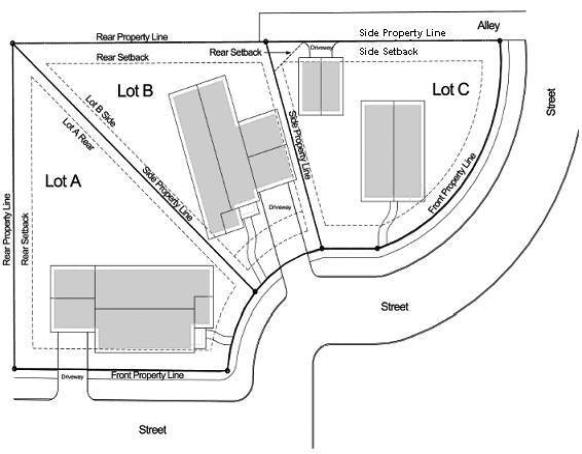L
Land division means the process of dividing land to create parcels or lots.
Land use district is the same as a zoning district.
Landing means a level part of a staircase, as at the end of a flight of stairs.
Landscaping means any combination of living plants such as trees, shrubs, plants, vegetative ground cover or turf grasses, and may include structural features such as walkways, fences, benches, plazas, works of art, reflective pools, fountains or the like. Landscaping also includes irrigation systems, mulches, topsoil, and re-vegetation or the preservation, protection and replacement of existing trees.
Livable space means the gross space of a dwelling unit(s) utilized for living, sleeping, eating, cooking, and sanitation.
Live/work dwelling unit means a structure or portion of a structure that combines a nonresidential use that is allowed in the zone with a residential livable space. A live/work dwelling unit is allowed instead of, or in addition to, a home business as defined by this code.
Loading space means an off-street space for the temporary parking of a vehicle that is loading or unloading persons, merchandise, or materials.
Lodging, hotel/motel means a building or portion thereof designed for and/or used for occupancy of transient individuals who are lodged with or without meals.
Loft means any floor located above the main floor and open to it on at least one side with a ceiling height less than seven feet and used as a living or sleeping space.
Lot means a unit of land that is created by a subdivision of land.

Lot area means the total surface area (measured in square feet of horizontal area) within the boundary lines of a lot.
Lot, corner means a lot abutting upon two or more streets, other than alleys, at their intersection, or upon two parts of the same street, such streets or parts of the same street forming an interior angle of less than 135 degrees within the lot line.
Lot coverage means all areas of a lot or parcel covered by buildings (as defined by building footprints) and other structures with surfaces greater than 18 inches above the finished grade, excluding unenclosed covered or uncovered porches, patios, decks, carports, balconies or stoops up to 10 percent of the total lot area. Eaves are not included in lot coverage.
Lot depth means the horizontal distance between the front and the rear lot or parcel lines. In the case of a corner lot the depth shall be the length of the longest front lot or parcel line.
Lot, interior means a lot or parcel of land other than a corner lot.
Lot line means any property line bounding a lot or parcel as herein defined.
Lot line, front means the property line abutting a street. Corner lots or parcels and through lots or parcels may have two or more front lot lines.
Lot line, rear means a lot line not abutting a street which is opposite and most distant from the front lot line. In the case of an irregular or triangular-shaped lot, an assumed lot line 10 feet in length within the lot parallel to and at the maximum distance from the front lot line. There may be two or more rear yards for one lot.
Lot line, side means any lot or parcel line that is not a front or rear lot line.
Lot of record means a unit of land held in separate ownership as shown on the records of the Deschutes County Clerk, which conforms to all zoning and subdivision/partition requirements in effect on the date the unit of land was created.
Lot, through/double frontage means an interior lot having a frontage on two streets and/or highways, not including an alley.
Lot width means the average distance between the side property lines (the two property lines most perpendicular to the front property line). In the case of corner lots that include two or more front property lines, “lot width” shall mean the average distance between the longest front property line and the farthest opposite property line. In the case of irregularly shaped lots or parcels having four or more sides, “average lot width” is the sum of the shortest and longest property lines divided by two.
Low stress facility means transportation infrastructure, including, but not limited to, protected bike lanes, separated pathways, crossings, sidewalks, and neighborhood greenways, that has a Level of Traffic Stress (LTS) of either 1 or 2, as calculated per the ODOT Analysis and Procedures Manual.